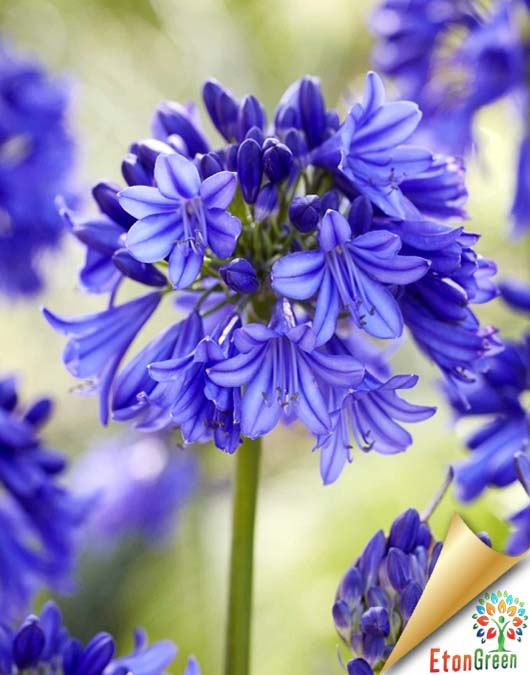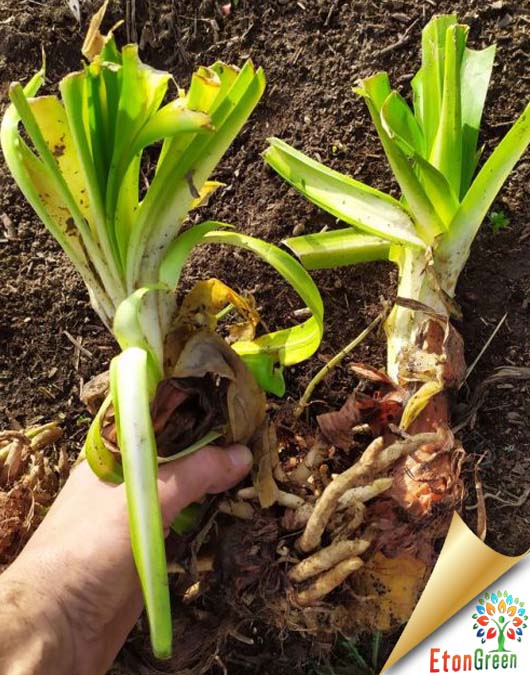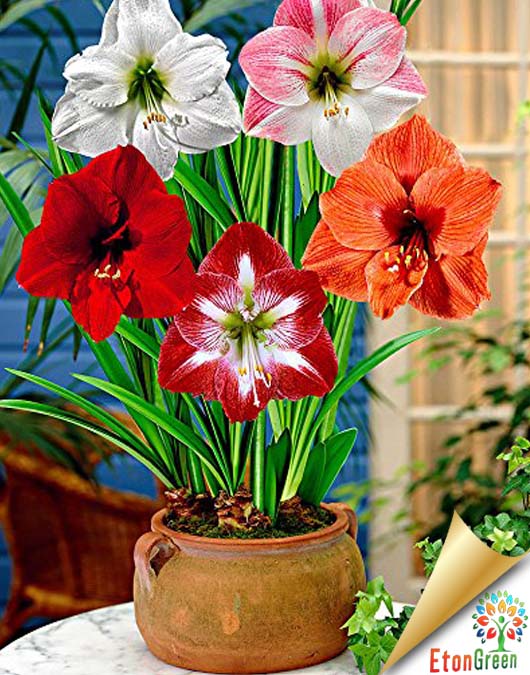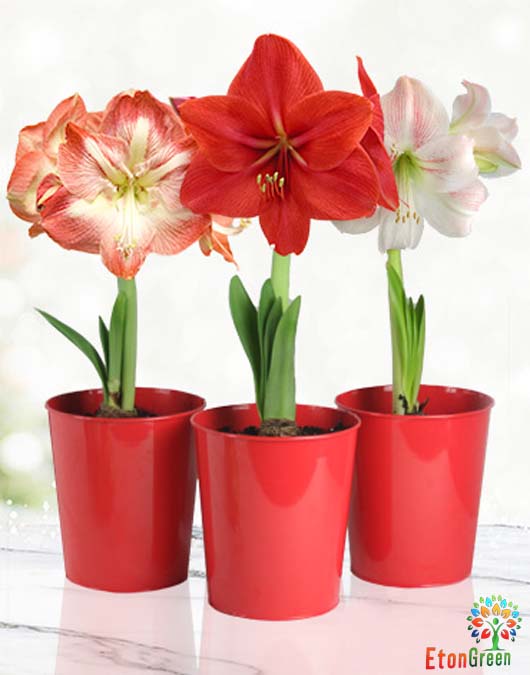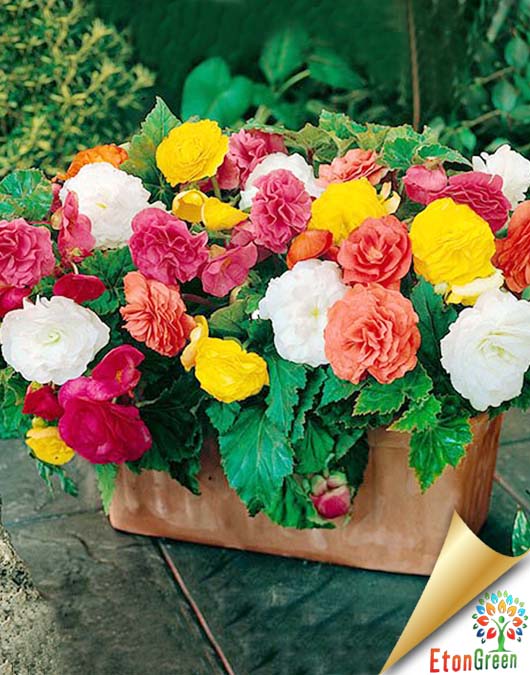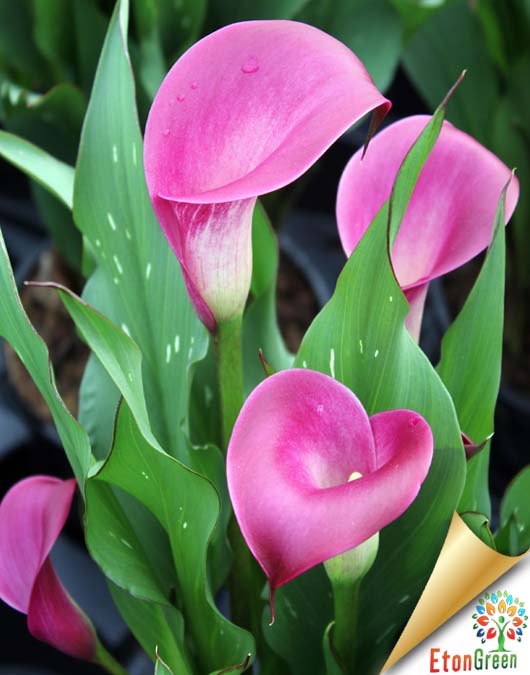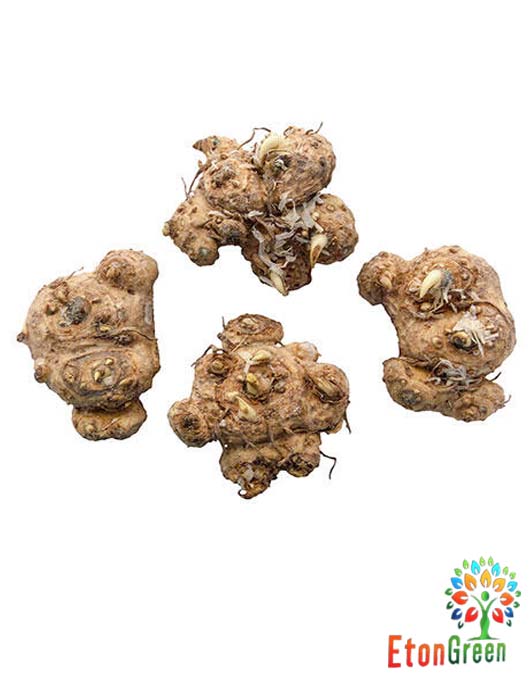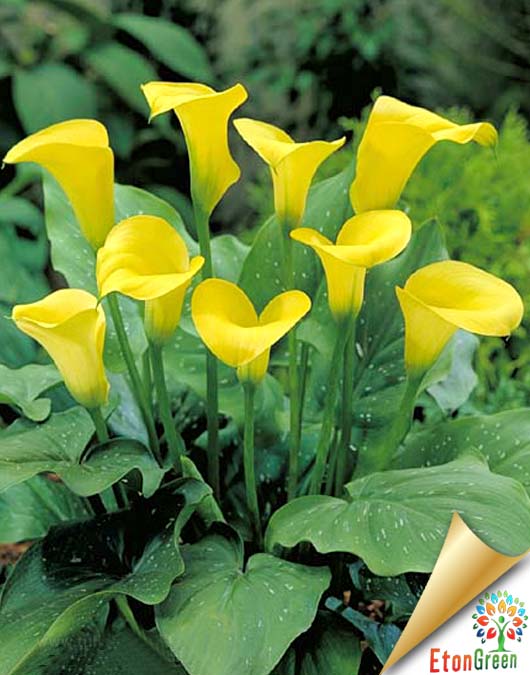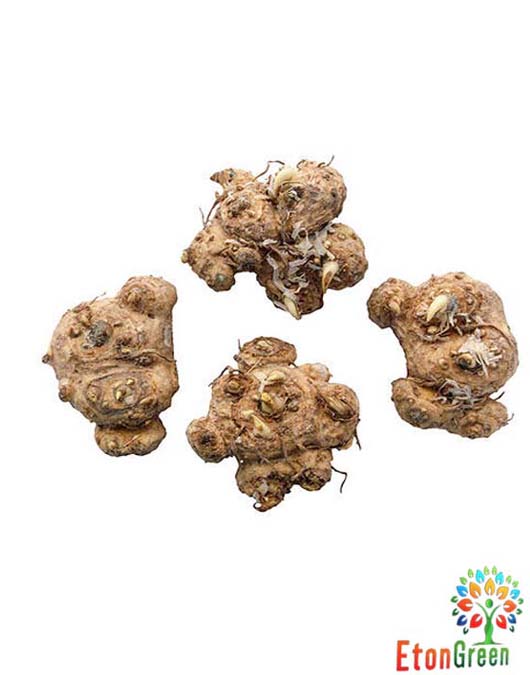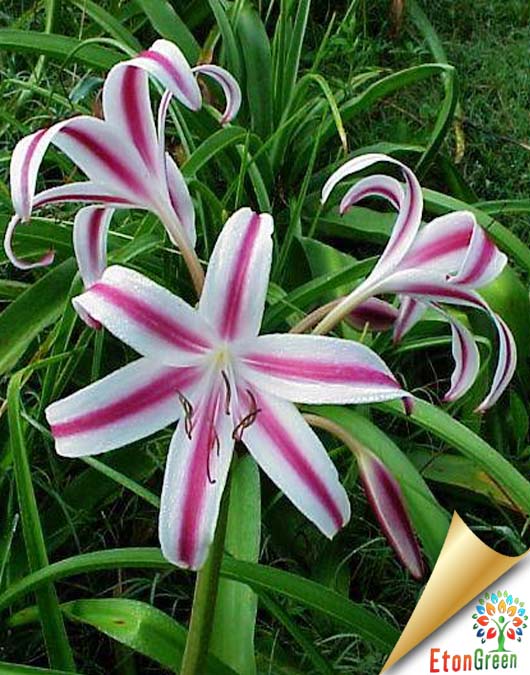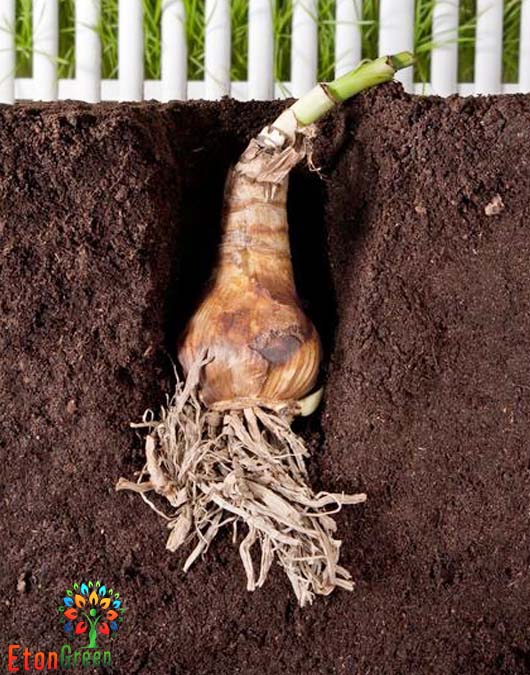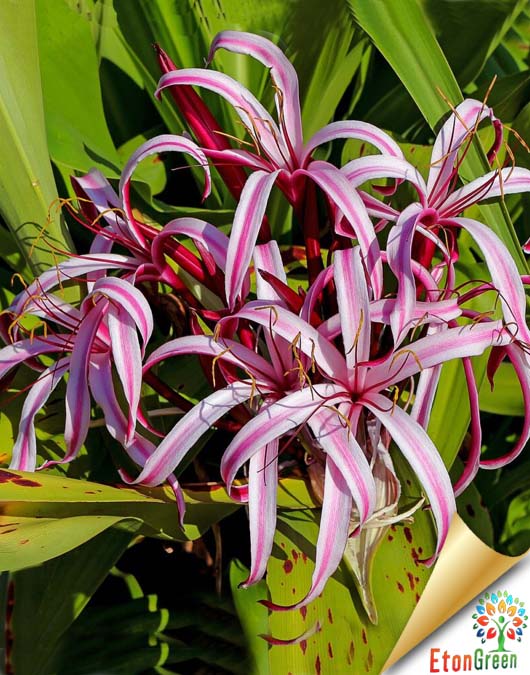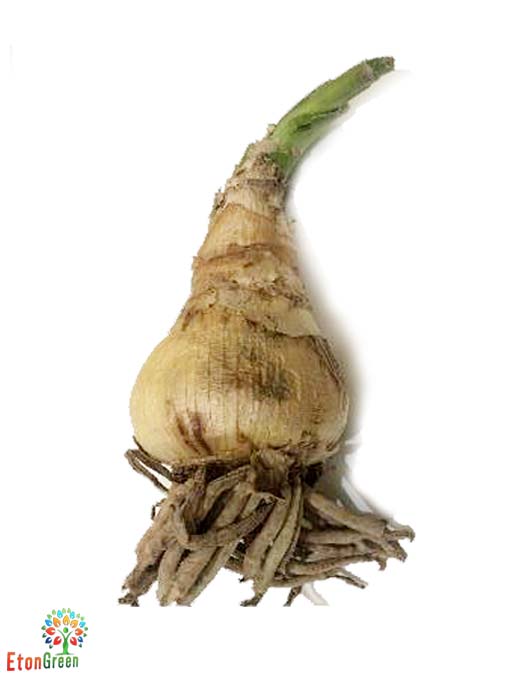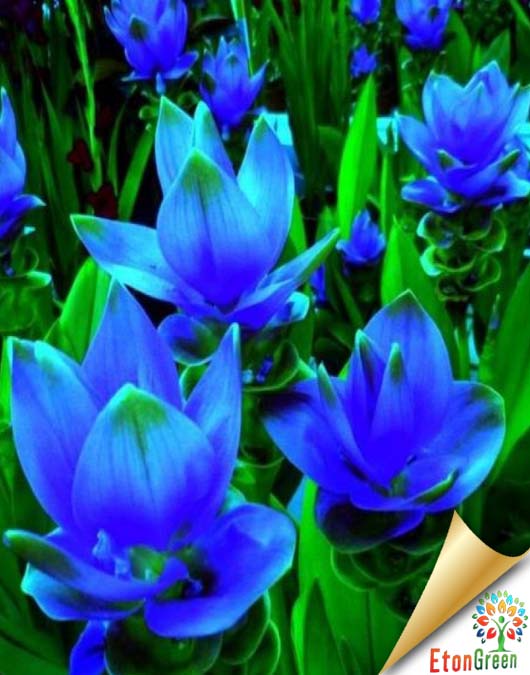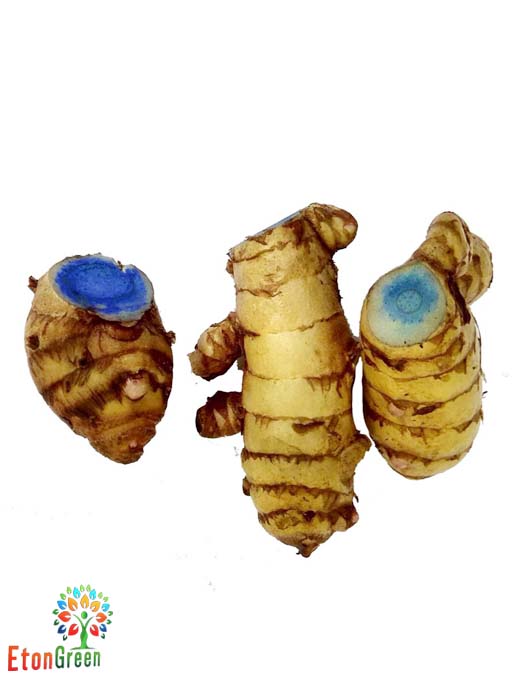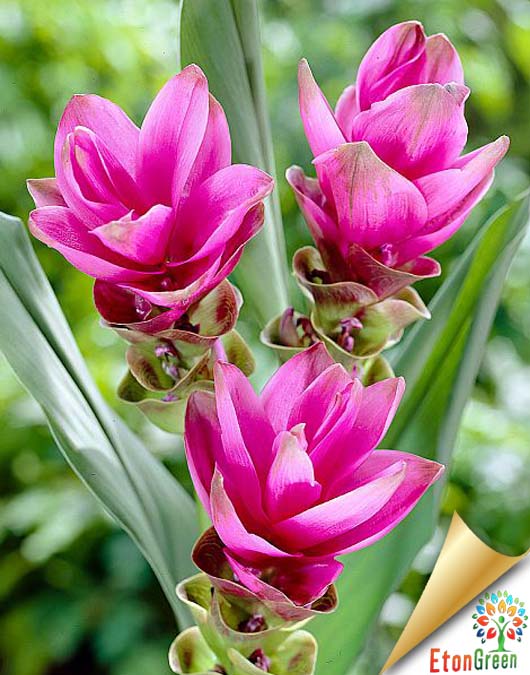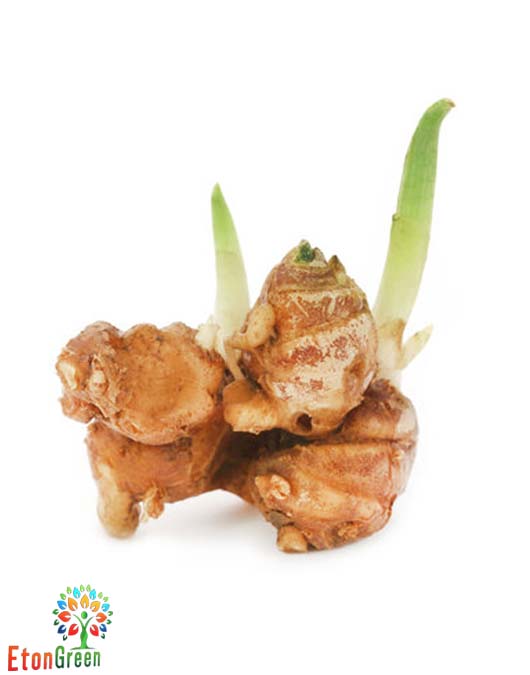- Shipping charge ₹ 90 for entire order
- These plants are perennial herbaceous bulbous plants. They generally have large fleshy bulbs. It is a plant with strap-shaped, glossy, green leaves and producing few large funnel-shaped flowers on a stout stalk, from March-May This plant is very suitable for planting in border, shrubbery and in a pot.
- The amaryllis lily is mainly used for ornamental purpose in garden, terrace, balcony, patio, etc.
- Common name: Hippeastrum
Color: The usual color is white with crimson veins, but pink or purple also occur naturally.
Bloom time: Late December until the end of June.
Height: 24 in/60 cm.
Difficulty level: EasyPlanting & Care
Amaryllis like their soil rich, but exceptionally well-drained, so ideally create a mix from one part well-rotted manure, one part horticultural grit or sand, and two parts leaf mould. Two-thirds good compost mixed with one-third grit also does fine.Sunlight: Full sunSoil: Well-drained soil.
Water: Keep soil moist throughout the growing season.
Temperature: 20°C
Fertilizer: Apply any organic fertilizer.
Harvesting: After the amaryllis has stopped flowering, it can be made to flower again. Cut the old flowers from the stem after flowering, and when the stem starts to sag, cut it back to the top of the bulb. Continue to water and fertilize as normal all summer, or for at least 5-6 months, allowing the leaves to fully develop and grow. When the leaves begin to yellow, which normally occurs in the early fall, cut the leaves back to about 2 inches from the top of the bulb and remove the bulb from the soil. Clean the bulb and place it in a cool (40-50 deg. F), dark place such as the crisper of your refrigerator for a minimum of 6 weeks. Caution: Do not store amaryllis bulbs in a refrigerator that contains apples, this will sterilize the bulbs. Store the bulbs for a minimum of 6 weeks.
Care:
- Once the plant is flowering, continue the watering and keep it out of direct sunlight, and slightly cooler (10-15°C), but as light as possible to promote a longer flower life.
- Each individual flower should last two or even three weeks before they brown.
- As each one fades, cut it off at the top of the stalk and then when the whole stalk is over and begins to sag, carefully cut it off just above the bulb nose.
- After flowering you can keep them from one year to the next.
- Feeding needs to continue and you want to water too, until the leaves begin to yellow in late summer/early autumn.
- At this stage, cut the leaves back to about 6cm (2½in) from the top of the bulb and remove it from the pot.
- Keep the bulb cool (5-10°C) and dark, to give it a dormant period for 8 weeks before you can encourage it to come into leaf and flower again When the temperature in your greenhouse falls to below 10C, bring them into the warmth and begin gentle watering again and your bulb will re-shoot.
- Don t re-pot it for the first couple of years; it hates root disturbance.
- The older and bigger the bulb, the more flowering stems you’ll get, so it’s worth the trouble of nurturing these mini football bulbs.
- Bulbs older than two years will produce offset bulblets.
- These may be left attached to the mother and re-potted with her, creating an amazing show, but its best to remove them carefully just before you replant and put them in their own individual pots.
- These little bulbs will take two years before producing their first flower, but it will be a proud moment when they do.
- Shipping charge ₹ 90 for entire order
- Is it a bulb? Is it a root? No, it’s a begonia—technically a “tuber”—that produces some of the most brilliant blooms in any late-season garden! A very versatile and colorful species, Begonias can be planted in pots, window boxes, the ground, or just about anywhere in either sun or shade.
- Tuberous begonias are popular all over the world. Not only do they have attractive flowers, but their foliage can be quite interesting, too. They can brighten up both your indoor and outdoor gardens.
- Begonia Tuberous Double make your garden look very beautiful as they start blooming in month April. The utterly captivating fragrance of fresh Begonia is hard to beat in a garden.
- Simply plant the bulbs 20cm deep and wait for these lovely Summer blooming perennials to give you a pleasing look.
- Well drained – light, sandy, clay- heavy, moist chalky, alkaline, acidic soil.
- Shipping charge ₹ 90 for entire order
- Calla Lilies make fantastic container and landscape plants, Speckled foliage and gorgeous blooms add a touch of elegance wherever they go, and despite their graceful appearance, they’re remarkably easy to grow.
- Delicate and elegant, our Pink Melody Calla strikes the perfect note to bring harmony to any garden. This plant makes a bold statement with color gradients that start with white, dip into rich pink, and then finish with pale green at the eye. Its large size makes it ideal for prominent positions in the garden. Tall and floriferous, with strong stems that beg to be used for cut flower arrangements.
- Calla lily is easy to grow and add a classy look to perennial gardens, cutting gardens and container plantings.
- Calla lilies grow well in pots and planters. They can be mixed with other annuals, but usually perform better in a pot on their own. The flowers last for weeks.
- Shipping charge ₹ 90 for entire order
- Pick these easy-to-grow varieties for the best blooms. It is a rhizomatous herbaceous perennial plant, evergreen where rainfall and temperatures are adequate.
- It has large clumps of broad, arrow shaped dark green leaves up to 45 cm long.
- The inflorescences are large and are produced in spring, summer and autumn, with a pure white spathe up to 25 cm and a yellow spadix. The spadix produces a faint, sweet fragrance.
- Dig up the rhizomes in autumn, usually after the first frost and store for winter.
- Dig a hole about three times as deep as the height of the bulb.
- Set the bulb in the hole, pointy end up, then cover with soil and press firmly
- Space bulbs 8 to 10 inches apart
- Water thoroughly after planting
- Use the potting mix for bulb plantation as Garden soil + Compost + Perlite + Sand (2:2:1:1) Soil + Cocopeat + vermicomposting (2:1:2)
- Keep them adequately fertilized and watered, misting the plant every so often to keep the ambient humidity high
- They are susceptible to aphids so, take a look closely and apply insecticide.
- Shipping charge ₹ 90 for entire order
- Crinum lilies are large, heat and moisture loving plants, producing an abundant array of showy flowers in summer.
- Lilly like their soil rich, but exceptionally well-drained, so ideally create a mix from one part well-rotted manure, one part horticultural grit or sand, and two parts leaf mould. Two-thirds good compost mixed with one-third grit also does fine.
-
Crinum Planting Procedure:
- Each bulb needs to be planted right side up
- The more pointed end is considered the top
- Plant each bulb in a hole that is just deep enough that its neck is protruding from the soil and the bottom of the bulb is covered in soil
- Covering the entire bulb with soil and planting too deep discourages flowering
- Space bulbs at least 8 inches apart and water the planting site or container well after planting
- Plant the bulb, or place the potted bulb in a warm place with direct light since heat is necessary for the development of the stems.
- Shipping charge ₹ 90 for entire order
- Crinum lilies (Crinum spp.) are large, heat and moisture loving plants, producing an abundant array of showy flowers in summer.
- This crinum typically blooms in July, with slender-petaled, fragrant white flower that is highlighted with long, wine red stamens. They are unusual, looking like nothing else in the garden. Crinum leaves are basal, typically long and strap-shaped.
-
Planting And Care
- Protect from winter wet
- Generally disease and pest free
- In fall before the first frost, dig dry and store bulbs for winter in a cool, frost-free location in a medium such as peat or vermiculite that is given minimal moisture
Crinum Lily Care
- Plant 10 cm deep in any moderately fertile, moist but well-drained soil
- Bulbs should not sit in water, the soil should drain well
- Plant the large bulbs in full sun or filtered light in early spring
- Each bulb needs to be planted right side up
- The more pointed end is considered the top
- Plant each bulb in a hole that is just deep enough that its neck is protruding from the soil and the bottom of the bulb is covered in soil
- Covering the entire bulb with soil and planting too deep discourages flowering
- Space bulbs at least 8 inches apart and water the planting site or container well after planting
- Shipping charge ₹ 90 for entire order
- Despite its name, it is not related to the tulip, but to the various ginger species such as turmeric. It can grow as an indoor plant and is also sold as a cut flower.
- Inflorescences, stems, and leaves of this plant resemble the flowers, stems, and leaves of tulips, hence the common name. The true flowers are seen only if they curl around the bracts edges.
- Each inflorescence appears atop a rigid, reed-like stem that grows to 2 inches tall from a clump of narrow, lance-shaped, dark green leaves
-
Curcuma Planting Procedure:
- Plant rhizomes in spring after last frost date in organically rich, medium moisture, well-drained soils in full sun to part shade
- Plant rhizomes outdoors in spring
- Plant them at a depth of 4 inches
- Plants may also be grown in containers that should be overwintered indoors in the pots in a cool dry location with minimal moisture
- Shipping charge ₹ 90 for entire order
- Despite its name, it is not related to the tulip, but to the various ginger species such as turmeric. It can grow as an indoor plant and is also sold as a cut flower.
- Inflorescences, stems, and leaves of this plant resemble the flowers, stems, and leaves of tulips, hence the common name. The true flowers are seen only if they curl around the bracts edges.
- Each inflorescence appears atop a rigid, reed-like stem that grows to 2 inches tall from a clump of narrow, lance-shaped, dark green leaves.
-
Curcuma Planting Procedure:
- Plant rhizomes in spring after last frost date in organically rich, medium moisture, well-drained soils in full sun to part shade
- Plant rhizomes outdoors in spring
- Plant them at a depth of 4 inches
- Plants may also be grown in containers that should be overwintered indoors in the pots in a cool dry location with minimal moisture
-
Caring for Curcuma
- Prepare your planting site, which should be in full sun. Till in a several inches of organic matter, such as peat moss or course sand, to the 12 inches of your planting site to make your soil better suited for drainage. Plant curcumas about one per square foot and bury the bulbs only an inch from the surface of the soil. The eye–or bud–should be facing up .Push down on the soil with your hands to remove any possible air pockets. Water the bulbs and after the water seeps into the soil, push down the soil again.Fertilize curcuma bulbs after planting. Use about one tablespoon of fertilizer labeled 15-15-15 (or 16-16-16 for large curcuma) and a bit less for small varieties
- If your soil tends to dry out much, it’s best to grow Curcuma in partial shade.
- Provide regular moisture throughout the growing season and do not allow soils to dry out.

